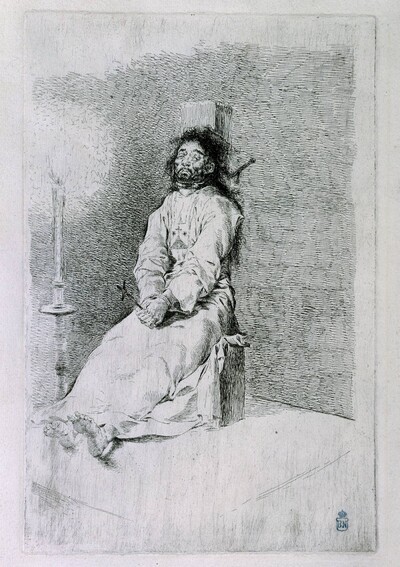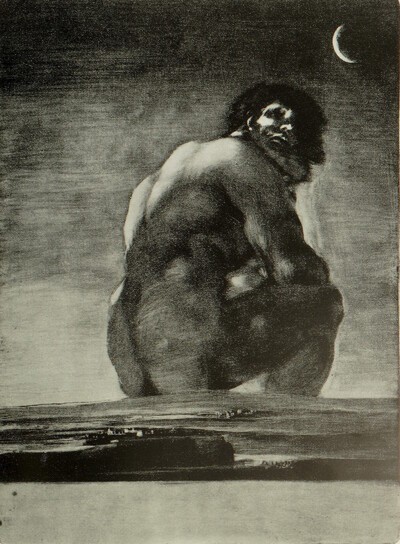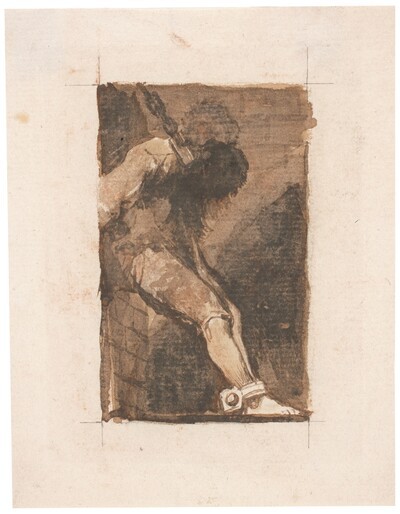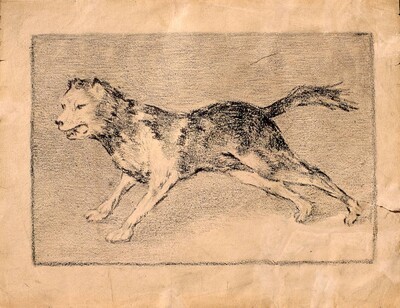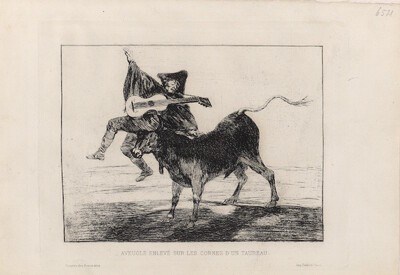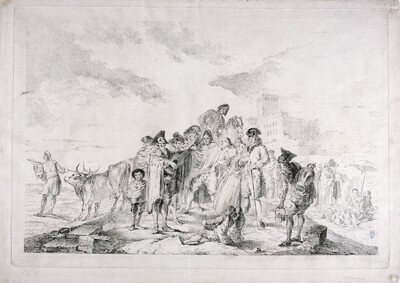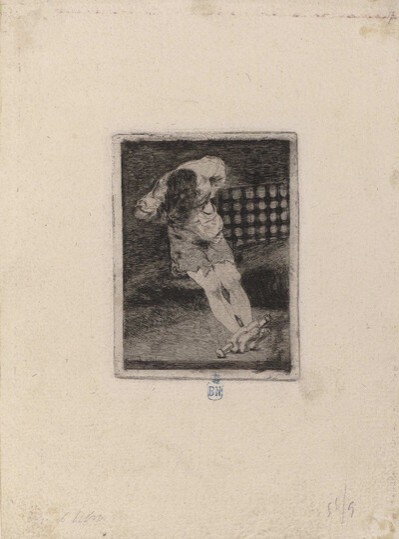- Cronología
- Ca. 1810 - 1815
- Dimensiones
- 115 x 85 mm
- Técnica y soporte
- Etching
- Reconocimiento de la autoría de Goya
- Undisputed work
- Ficha: realización/revisión
- 16 Nov 2010 / 07 Jun 2023
- Inventario
- 225
- Otros títulos:
-
A prisoner in profile looking left (Un prisionero de perfil hacia la izquierda)
4 (in pencil, upper right-hand corner).
55/9 (lower right-hand corner).
See The Blind Guitarrist and The custody is as barbarous as the crime.
The title of this work is taken from the handwritten title of a state proof that Goya included in the album of his Disasters of War prints which he gave to his friend Ceán Bermúdez and which is now in the British Museum, London.
In a darkened cell a prisoner is bound to the wall by chains around his neck. His arms are tied behind his back and his feet are locked in a large shackle. The prisoner's body is curved in a line that starts at his feet, which are resting on the floor, continues up to his slightly bent knees, and finishes at his torso, which is slumped forward. His face is in shadow, concealing his features from the viewer. This awkward posture is the same as that of the prisoner depicted in The custody is as barbarous as the crime. The ragged clothes of the man are lighter in tone, possibly an allusion to his innocence.
Goya has described the space using short, compact horizontal lines, whilst the face of the accused has been rendered using a dense grid-like pattern, making it impossible for us to see his features.
The title of this print sheds some light on the story of this prisoner, who is most likely awaiting his execution, and expresses the inflexibility and inhumanity of some of the punishments that the laws of the time subjected prisoners to. This etching must have been made during the same period as The custody is as barbarous as the crime and The custody of a prisoner does not call for torture and is related to various prints from the Disasters of War series, in which Goya depicts scenes of prisoners condemned to death, clearly demonstrating his opposition to capital punishment.
-
Exposición de la obra grabada de GoyaSociedad Española de Amigos del ArteMadrid1928catalogue by Miguel Velasco Aguirrecat. 46
-
Grabados y dibujos de Goya en la Biblioteca NacionalBiblioteca NacionalMadrid1946catalogue Elena Páez Ríoscat. 131
-
Goya en la Biblioteca Nacional. Exposición de grabados y dibujos en el sesquicentenario de su muerteBiblioteca NacionalMadrid1978May - June 1978cat. 135
-
Goya y la Constitución de 1812Museo Municipal de MadridMadrid1982organized by Madrid Town Hall, consultant editor José Manuel Pita Andrade. From December 1982 to January 1983cat. 46
-
Francisco de Goya: Maleri, Tegning, GrafikkNasjonalgallerietOslo1996from 10th to April 14th 1996cat. 128
-
Ydioma universal: Goya en la Biblioteca NacionalBiblioteca NacionalMadrid1996from September 19th to December 15th 1996cat. 237
-
Goya artista de su tiempo y Goya artista únicoThe National Museum of Western ArtTokyo1999from December 1st to July 3th 1999cat. 264
-
Goya en tiempos de guerraMuseo Nacional del PradoMadrid2008consultant editor Manuela B. Mena Marqués, from April 14th to July 13th 2008cat. 122
-
Goya, grabadorMadridBlass S.A.1918cat. 264
-
Goya engravings and lithographs, vol. I y II.OxfordBruno Cassirer1964cat. 28
-
Vie et ouvre de Francisco de GoyaParísOffice du livre1970cat. 990
-
Catálogo de las estampas de Goya en la Biblioteca NacionalMadridMinisterio de Educación y Cultura, Biblioteca Nacional1996cat. 70
-
Goya en tiempos de guerraMadridMuseo Nacional del Prado2008p. 350-352

